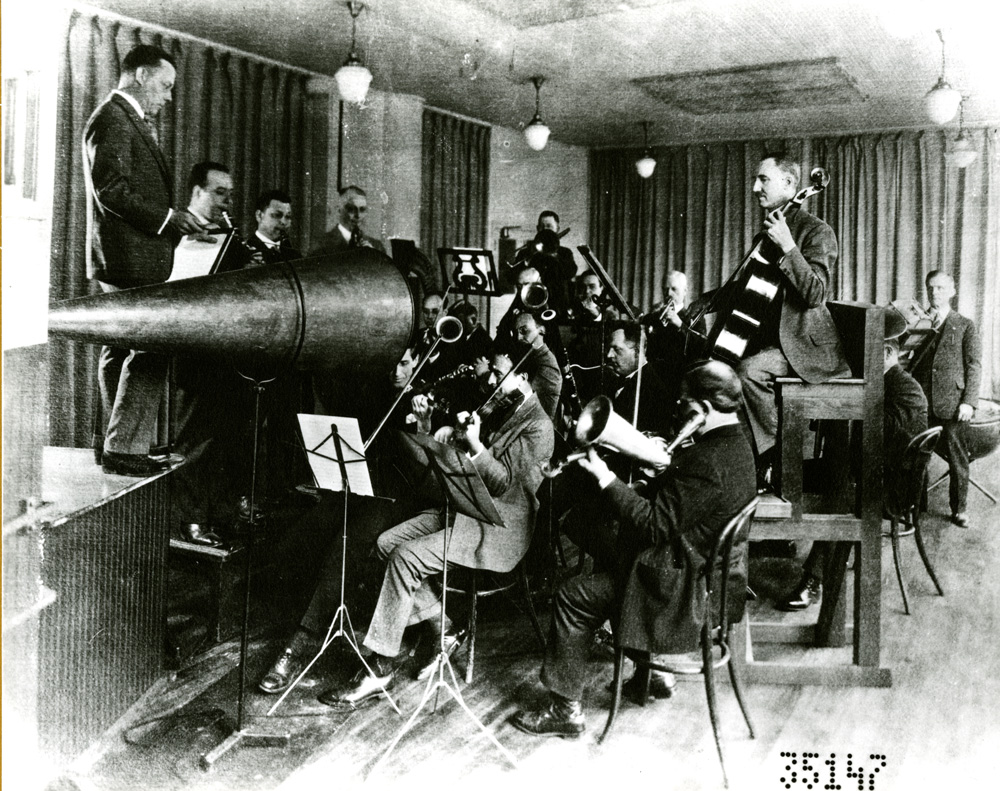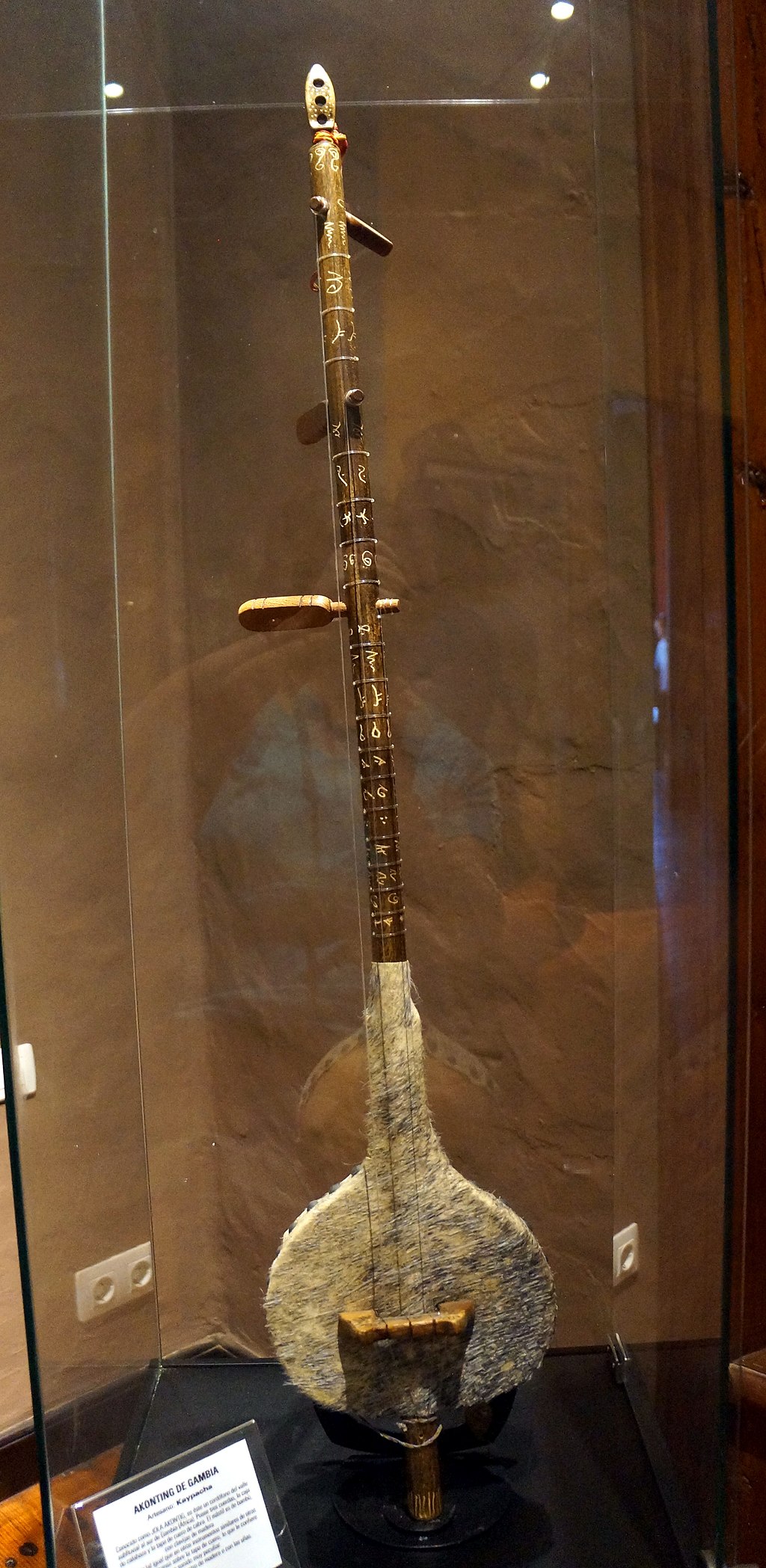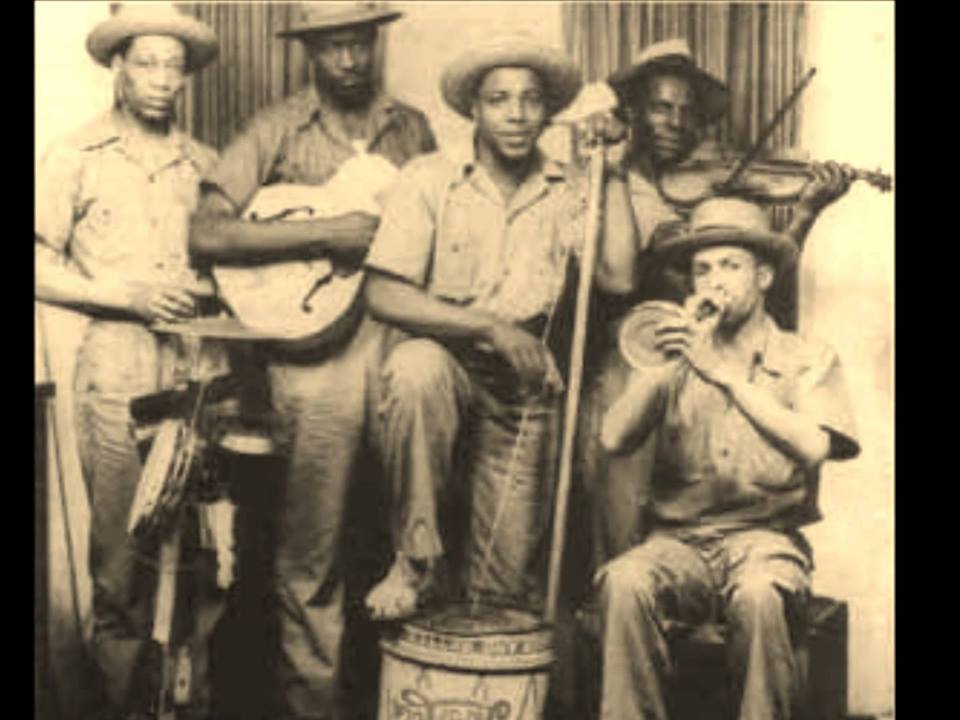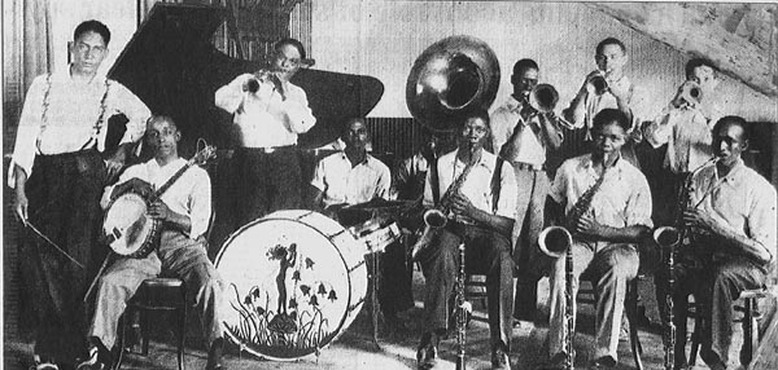Historic perspective on Jazz bass education
In order to get a good view on how Jazz education developed (in our case Jazz double bass education), we also need to look at the history of Jazz itself. This art form has a very specific historic development which also influences the way we teach and learn Jazz.
Jazz is a merging of at least two different cultures.1 African (former) slaves living in America started playing the instruments the Europeans brought from Europe and developed a new kind of music mixing harmony and melody from European music with African rhythmic elements and improvisation. Most musicians taught each other using an apprenticeship approach.2
‘This educational form was dependent on aural skills. This style of pedagogy was prevalent in an era where the music relied heavily on group improvisation.’3
‘Jam sessions were also a pivotal forum for the development of Jazz improvisation. Jam sessions were home to the exploration of and self-education in improvisation. Musicians used these sessions as a way to learn from fellow musicians to improve their own skills.’4

An important role in the development of Jazz was the invention of music recording techniques. For the first time in history, music could be reproduced and the invention of the gramophone made music available for a large audience. Now people could listen to music anywhere and could even listen back to recorded improvisation.
Where classical music was notated and could be reproduced, improvised music ‘would disappear in thin air at the very moment it came into being.5’ For Jazz musicians this was a unique opportunity to patiently replay the albums and copy the playing styles of the masters. Until now, transcribing music from recordings is assumed to be essential for learning to play Jazz6. The gramophone also led to a wider geographical spread of Jazz, Jazz musicians were no longer dependent on local teachers to learn to play Jazz. The new medium ‘gramophone’ became a source of inspiration around the globe creating Jazz communities in Europe, Japan and South America. Each contributing their own flavors to the new developing art style.
This was particularly true of Jazz an art form that was arguably invented by the phonograph. Previously musicians learned a new form by hearing it live. But with Jazz new artists often reported learning the complex new genre by buying Jazz records—then replaying them over and over studying songs until they’d mastered them. They’d also do something uniquely modern: slowing the record down to pick apart a complex riff. 7
 As mentioned before, Jazz can be determined as a mixture of African rhythmic and improvisational traditions combined with harmonic development of the European tradition. Although this is a simplification that needs more nuance it does reflect the multicultural background of Jazz. African slaves that were parted from their original traditional instruments started to build musical instruments using materials at hand, creating new percussion and string instruments. New instruments with African origin were invented and became important in Jazz like the banjo, which originated from the west African akonting8 and the washtub bass.
As mentioned before, Jazz can be determined as a mixture of African rhythmic and improvisational traditions combined with harmonic development of the European tradition. Although this is a simplification that needs more nuance it does reflect the multicultural background of Jazz. African slaves that were parted from their original traditional instruments started to build musical instruments using materials at hand, creating new percussion and string instruments. New instruments with African origin were invented and became important in Jazz like the banjo, which originated from the west African akonting8 and the washtub bass.
The washtub bass or gutbucket is a stringed instrument used in American folk music that uses a metal washtub as a resonator. Although it is possible for a washtub bass to have four or more strings and tuning pegs traditional washtub basses have a single string whose pitch is adjusted by pushing or pulling on a staff or stick to change the tension. The washtub bass was used in jug bands that were popular in some
African American communities in the early 1900s.9

Besides building their own musical instruments the African Americans also started using the instruments brought along by the Europeans like the piano, guitar, tuba, snare drum, double bass, trumpet and others.
Early Jazz was based on work songs and blues. Later, when it became more popular by the Americans from European backgrounds, the music also incorporated more western harmony and was made popular by the musicals and films of the 40’s and 50s.
Bass in Jazz
Early bass players in Jazz played either tuba or string bass or both. The marching bands mainly used tuba. Later when music was played in night clubs and theaters the double bass became more common.
Bass players developed a skill of playing improvised bass lines on given harmonic structures. Starting with a two beat (playing a note on the 1st and 3rd beat of a 4/4 bar) and, later on, a walking bass style using all 4 quarter of the bar and constructing a stepwise accompaniment for the harmonic structure.
These improvised bass lines were new in history, but they do show clear similarities with the figured bass from early music. Although these early music bass lines are precomposed and the variational style is left to the keyboard and lute players.

Most musicians that started playing Jazz in the 50s and 60s had no formal Jazz education possibilities, of course. The music was being invented as they played it. Most musicians were self-taught or had a classical training, they learned to play Jazz by transcribing recordings and peer to peer learning with senior musicians. Only in the late 70s and early 80s did schools for Jazz appear. Early methods for Jazz improvisation started to occur in the 60s and were usually a combination of classical instrument technique, scales and chords exercises and transcriptions of famous and influential instrumentalists.
The first professional educators of Jazz double bass were usually students of the first generation of well-known bass players. John Clayton, for example, was a student of Ray Brown and was also classically trained. He played in the Count Basie Orchestra, with Monty Alexander and was principle bass player of the Amsterdam Philharmonic Orchestra10 Another important educator, Rufus Reid, who wrote one of the first well known methods for double bass ‘the Evolving Bassist’, was also classically trained and plays both classical and Jazz.11
In Europe, Dutch bass player Hein van de Geyn who taught at the Royal Conservatoire for some years, created his own method book which became popular world-wide. It’s the most comprehensive bass method in a book form till date.12
In recent years some interesting developments arose using the internet as a source for information and teaching. Later I will describe in more depth the on-line Jazz bass methods of internationally acclaimed bass players such as Christian McBride and John Patitucci.
Table of contents:
- Historical perspective on Jazz bass education
- Topics of Jazz double bass education
- Historic overview of Jazz double bass methods
- Jazz Bass with John Patitucci
- New method of rhythmic improvisation for the Jazz bassist
Background and history of jazz bass education
Teaching jazz double bass has a relatively short history. Jazz started to develop in the early 1900s and came to full bloom in the 40s, 50s en 60s of the 20th century. Musicians in that era had either a classical background on the instruments they played or were self taught. The instrumental skills were developed through classical training but the skills for the jazz idiom; improvisation, knowledge of harmony and rhythmical development were learned from various sources. The aural tradition of playing music by copying others was something more known in the folk music and in the traditional music.
https://en.wikipedia.org/wiki/Jazz
Jazz is a merging of at least two different cultures. African slaves living in America started playing the instruments the Europeans brought from Europe and developed a new kind of music mixing harmony and melody from European music with African rhythmic elements and improvisation.
- Most musicians taught each other using an apprenticeship approach . “This educational form was dependent on aural skills. This style of pedagogy was prevalent in an era where the music relied heavily on group improvisation.”
- “Jam sessions were also a pivotal forum for the development of jazz improvisation. Jam sessions were home to the exploration of and self-education in improvisation. Musicians used these sessions as a way to learn from fellow musicians to improve their own skills.”
- An important role in the development of jazz was the birth of recorded music. For the first time in history, music could be reproduced with newly invented recording techniques. Along with the rise of jazz came the rise of the gramophone. People could listen to music anywhere and could listen back to recorded improvisation. For jazz musicians this was a unique change to be able to patiently replay the albums and copy the playing styles of the masters. Until now transcribing music from recordings is assumed to be the most effective way of learning to play jazz. The gramophone also lead to a wider geographical spread of Jazz. Not only the audiences profited from these recordings. In learning and teaching Jazz musicians were no longer dependent on local teachers but the new medium ‘gramophone’ became a source of inspiration around the globe creating jazz communities in Europe, Japan and South America. Each contributing their own flavors to the new developing art style.
“This was particularly true of jazz an art form that was arguably invented by the phonograph. Previously musicians learned a new form by hearing it live. But with jazz new artists often reported learning the complex new genre by buying jazz records—then replaying them over and over studying songs until they’d mastered them. They’d also do something uniquely modern: slowing the record down to pick apart a complex riff.”
As mentioned before Jazz can be determined as a mixture of African rhythm and improvisation traditions combined with harmonic development of the European tradition. Although this is a simplification that needs more nuance it does reflect the multicultural background of Jazz.
African slaves that were parted from their original traditional instruments started to build musical instruments using materials at hand creating new percussion and string instruments.
New instruments with African origin were invented and became important in Jazz like the banjo, which originated from the west African akonting. and the bathtub bass.
“The washtub bass or gutbucket is a stringed instrument used in American folk music that uses a metal washtub as a resonator. Although it is possible for a washtub bass to have four or more strings and tuning pegs traditional washtub basses have a single string whose pitch is adjusted by pushing or pulling on a staff or stick to change the tension. The washtub bass was used in jug bands that were popular in some African American communities in the early 1900s.”
Besides building their own musical instruments the African Americans also started using the instruments brought along by the Europeans like the piano, guitar, tuba, snaredrum, double bass, trumpet and others.
Early Jazz was based on work songs and blues. Later, when it became more popular by the Americans from European backgrounds, the music also incorporated more western harmony and was made popular by the musicals and films of the 40’s and 50s.
Bass in Jazz
Early bass players in jazz played either or both tuba and string bass. The marching bands mainly used tuba. Later when music was played in night clubs and theaters the double bass became more common.
Bass players developed a skill of playing improvised bass lines on given harmonic structures. Starting with a two beat (playing a note on the 1st and 3rd count of a 4/4 bar) and later on a walking bass style using all 4 quarter of the bar and constructing a stepwise accompaniment for the harmonic structure.
This was completely new in history but does show clear similarities with the figured bass from early music. Although these early music bass lines are precomposed and the variational style is left to the keyboard and lute players.
Most musicians that started playing jazz in the 50s and 60s had no formal jazz education possibilities of course. The music was being invented while they played it. Usually musicians learned to play jazz by a combination of classical training, transcribing recordings and peer to peer learning with senior musicians. Only in the late 70s and early 80s schools for jazz appeared. Early methods for jazz improvisation started to occur in the 60s and where usually a combination of classical instrument technique scales and chords exercises and transcriptions of famous and influential instrumentalist.
Examples of early jazz schools
The first important educators in Jazz bass where usually students of the first generation well known bass players. John Clayton for example, was a student of Ray Brown and was also classically trained. He played at the count basie Orchestra, With Monty Alexander and was principle bass player of the Amsterdam Philharmonic Orchestra Another important educator is Rufus Reid who wrote one of the first well known methods for double bass ‘the Evolving Bassist’. He was also classically trained and plays both classical and Jazz.
In Europe Dutch bass player Hein van de Geyn was teaching at the royal Conservatoire for some years and created his own method books which became popular world wide. It’s the most comprehensive bass method in a book till date.
In recent years some interesting developments arose using the internet as a source for information and teaching. Later I will describe in more depth the on line jazz bass methods of internationally acclaimed bass players as Christian McBride and John Patitucci.